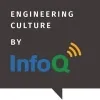
Revolutionizing Medical Device Software: Insights from Neeraj Mainkar
2025-01-03
Author: Jacob
The Journey to Medical Software Mastery
Neeraj began by sharing his impressive background, which started with a PhD in computational condensed matter physics. His career took off in defense contracting, where he specialized in physics-based simulations for the U.S. Army and DHS before transitioning into medical devices in the early 2010s. With experience spanning neurological devices, surgical robots, and now navigational devices for orthopedic surgery, Neeraj's passion lies in ensuring that advanced technology not only enhances surgical outcomes but also complies strictly with safety regulations.
The Quest for Safety and Quality
In the realm of medical devices, software bugs pose severe risks, making the assurance of high technical quality a top priority. Neeraj emphasized that the FDA guidelines demand rigorous design controls that ensure medical device manufacturers adhere to strict protocols. This includes thorough documentation, a repeatable development process, comprehensive testing across diverse workflows, and continuous verification and validation steps.
He stated, "If you don't document it, it didn’t happen," highlighting the importance of maintaining meticulous records in the software development lifecycle.
Creating a Culture of Quality
Instilling a culture of quality within teams is vital. Neeraj described how onboarding new engineers involves extensive training on regulations, the necessity for precise documentation, and how to apply best practices in both coding and software testing. The goal is to foster a sense of responsibility in developing life-critical devices. He uses the “mom test” to illustrate this sentiment: if an engineer wouldn't feel comfortable with their device being used on their mother, they are encouraged to push their work further.
Curating the Right Engineering Talent
Neeraj's philosophy on hiring is to attract a diverse range of engineers, combining experienced professionals in key roles with fresh talent enthusiastic about software development. He emphasized the significance of having engineers who approach their work methodically rather than with a "move fast and break things" attitude that’s commonplace in other tech sectors.
Collaboration is crucial, as software engineers in medical fields must often work with cross-functional teams including regulatory, quality, and hardware specialists.
Balancing Safety with Usability
While safety is paramount, Neeraj highlighted the importance of usability in medical device software. He explained that usability can be defined as how intuitive software is for its users—the goal being to minimize cognitive load while ensuring users can navigate workflows efficiently.
Incorporating user feedback from real surgeons during the design process is crucial to creating software that’s not only functional but also accessible. Neeraj warned that oftentimes, efforts to enhance usability can inadvertently compromise performance or maintainability, thus requiring a delicate balance.
Harnessing the Power of AI
As we enter an era dominated by artificial intelligence, Neeraj discussed how AI is being integrated into the medical device landscape. Not only does AI assist in the development process through automated unit testing, but it also aids in enhancing usability by analyzing user interactions and suggesting design improvements.
He noted, "The sky's the limit" when it comes to leveraging AI in the medical field, suggesting that ongoing advances in AI technology will continue to shape how medical software is developed and refined.
Navigating Post-Market Challenges
Once a medical device is released, the responsibilities of developers don't end. Neeraj explained the concept of post-market surveillance, where manufacturers are expected to monitor device performance and gather user feedback continually. This ensures that improvements can be made based on real-life usage rather than theoretical metrics.
Understanding Diverse User Needs
A significant challenge highlighted was the need to accommodate a diverse user base, including surgeons and operating room nurses. Neeraj stressed the importance of designing workflows that cater to varying levels of expertise and responsibilities, ensuring all users have a seamless experience with the software.
Conclusion: A Commitment to Improvement
In conclusion, Neeraj Mainkar’s insights shed light on the meticulous and responsible approach required in developing medical device software. As innovations in AI and technology continue to evolve, the mission remains clear: to create safe, effective, and user-friendly software that can transform surgical practices and ultimately improve patient outcomes.
If you're interested in continuing this riveting conversation, Neeraj Mainkar can be reached on LinkedIn at nmainkar. Stay tuned for more insights on how technology is reshaping the world of healthcare!



 Brasil (PT)
Brasil (PT)
 Canada (EN)
Canada (EN)
 Chile (ES)
Chile (ES)
 Česko (CS)
Česko (CS)
 대한민국 (KO)
대한민국 (KO)
 España (ES)
España (ES)
 France (FR)
France (FR)
 Hong Kong (EN)
Hong Kong (EN)
 Italia (IT)
Italia (IT)
 日本 (JA)
日本 (JA)
 Magyarország (HU)
Magyarország (HU)
 Norge (NO)
Norge (NO)
 Polska (PL)
Polska (PL)
 Schweiz (DE)
Schweiz (DE)
 Singapore (EN)
Singapore (EN)
 Sverige (SV)
Sverige (SV)
 Suomi (FI)
Suomi (FI)
 Türkiye (TR)
Türkiye (TR)
 الإمارات العربية المتحدة (AR)
الإمارات العربية المتحدة (AR)